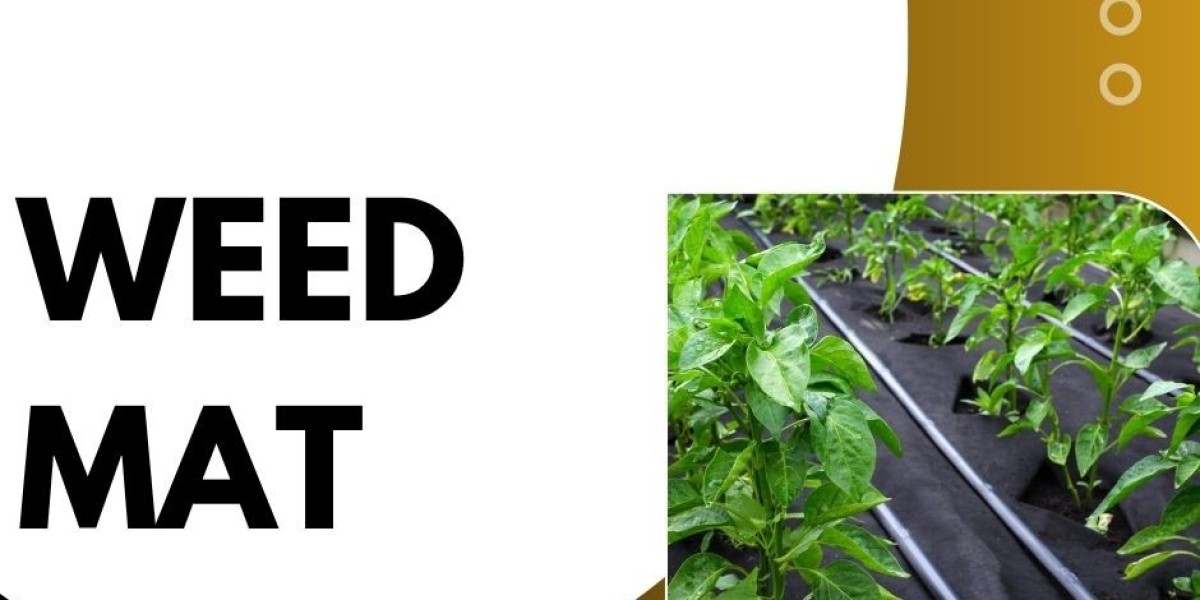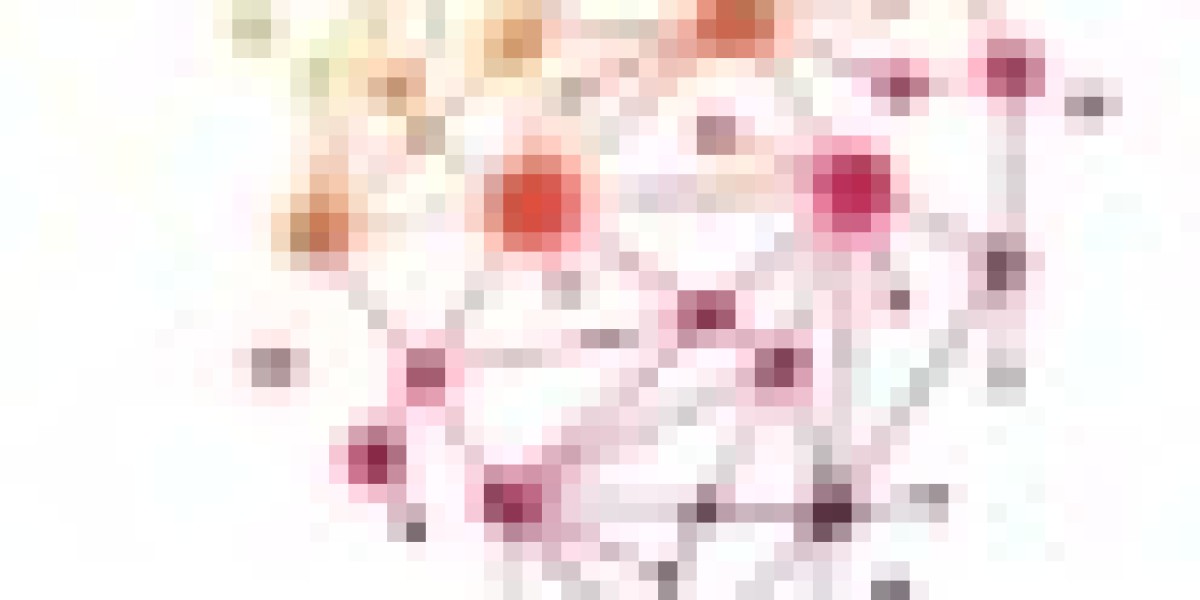The weed mat is therefore a powerful and silent yet very effective weapon in the fight for a clean garden. Also called a Weed control mat, this eco-friendly and labour-saving tool helps to keep the soil free of weeds by cutting off the supply of sunlight that the latter need to grow, but at the same time, water and air can still be absorbed by the soil and the plants. But choosing the right type is the first step towards ensuring that it will be effective and compatible with your project for a long time. This thorough guide will help you understand the main factors, products, and usage to make a wise decision.
Understanding Weed Mat Types and Materials
Typically, Bunnings weed mat can be woven or non-woven. These two fabrics vary in their physical makeup and thus properties and areas of application. Generally, woven polypropylene material is the most widely available and the toughest one of the two. This is because it is made from tightly interwoven synthetic fibres that provide the fabric with strength in the length and the width direction which makes it tear-resistant and, thus could be used in a gravel path or driveway areas prone to foot or vehicle traffic. The process of weaving creates good water and air permeability, which are very important soil health prerequisites. Due to the durability and water permeability offered by the structure, the heavy-duty ones like those which Singhal Landscape Geotextile provides are a great solution to large-scale farming and landscaping projects requiring a long-term barrier.
The other major category is non-woven fabric. The production method of this material is different in that it bonds the fibres tightly in the random orientation creating a felt-like texture. Non-woven fabrics normally assure a more consistent look than many woven fabrics and, what is more, some of them have even slightly better light-blocking properties than those of the woven fabrics. They are very permeable fabrics, which means that liquid can pass through them easily and hence they are the most suitable for flower beds and vegetable gardens where the maintenance of soil moisture is very important. Although they are reasonably strong they may not be able to withstand the same tough impact or sharp-edged gravel as their woven counterparts. Biodegradable products such as those produced from jute or coir for nature-friendly gardeners are also available in the market and the reason being is that they break down naturally over time and, therefore, in the end, they provide the soil with organic matter.
Assessing Durability and Lifespan
The duration of a weed mat is mostly determined by its material as well as the density which varies and is measured in grams per square meter (GSM). For short term uses that include a vegetable patch lasting a single season only, a light GSM mat could be enough. However, when it comes to permanent landscaping, that is, under decking, pathways, or borders, a strong and UV-stabilized fabric is a must-have. The reason why most synthetic waste mats are destroyed by the sun is that the rays hit the mats directly and hence, those with additional UV resistance will, therefore, have their lifespan extended considerably and can last from 5 to 20 years. In case you are shopping in local hardware stores, you will come across many specifications; e.g. the heavy-duty Bunnings weed mat or a similar product from Weed mat mitre 10 will give details on the expected duration and GSM of the product. To sum up, it is always better to buy the highest GSM that you can afford for the areas that you will not want to visit again soon for re-installation and you will be safe.
Permeability and Soil Health
The most important factor out of all is the capability of the mat to allow water, air, and other nutrients to pass through it to reach the soil below. Besides, a low-quality or improperly installed weed control mat can lead to waterlogging, the death of the soil organisms and even the stunting of plant roots as it essentially suffocates the soil. Good mats, especially woven polypropylene and non-woven polyester, are made in a way that allows the water that is in the soil to drain freely and therefore they do not result in waterlogging and hence the plants keep hydrated. It is always good to check whether a product is being marketed as water permeable or not. What is more, if the mat holds water on the surface not only does it block the roots from getting water but also creates a surface where new weed seeds can get water and thus grow on top of the fabric, thereby accomplishing the opposite of its primary objective.
Application-Specific Choices
The selection depends significantly on where and how the material will be used:
Under Paving or Gravel Paths: In such a case, the best option would be woven, heavy-duty polypropylene. Because of its high tensile strength, the gravel or aggregate does not rip the fabric, and thus, it serves as a very important separating layer, which, in turn, stops the decorative aggregate from sinking into the soil underneath.
Vegetable and Flower Beds: The preference should be given to non-woven or biodegradable fabrics. They not only do not harm plant stems, but also allow the exchange of gases. Among the gardeners, many choose the biodegradable one as it helps to make soil preparation for the next seasons easier without the need for removal.
Sloping Areas or Embankments: The thickness of the non-woven geotextile is what you need to pay attention to that it can closely follow the surface of the soil and soil stabilization against erosion to a certain extent.
Around Trees and Shrubs: Heavy-duty, UV-stabilized woven mats, in general, are an excellent choice for long-term use. When you are cutting holes for planting, make sure the cuts are minimal and firmly fix the fabric so that the weeds do not take advantage of the edges.
Installation and Post-Installation Care
Choosing the fabric means only half the work; its proper installation is what determines the end result. The ground should be thoroughly cleared from all existing weeds and sharp debris before installing the fabric. All joints must be overlapped by 15-30 cm at least to stop the penetration of light and thus, weeds from pushing up between the joins. Secure the fabric with landscape staples or pins every meter, especially along the edges and the overlaps. In addition, it is very good to cover the mat with mulch, bark chips, or decorative gravel. This protective layer not only shields the fabric from UV radiation, thereby, significantly extending its life but also makes the place more attractive and helps the soil to retain moisture, thus, completing the weed suppression system.
Conclusion
Choosing to spend money on the right weed mat is basically a smart move that will bring you returns after some years in the form of less upkeep in your garden. Being aware of the differences between woven and non-woven fabric, checking the gsm for durability, and matching the fabric features with your exact garden usage will allow you to have a tidy, weed-free area where your plants will get healthy. A good weed control mat stands for more than just a fabric layer; it is a
Frequently Asked Questions
Q: Will a weed mat be a permanent solution for my weed problems?
A: Weed mats effectively block the growth of weeds from the soil; however, they do not prevent the seeds that are carried by the wind from landing and germinating in the mulch or other materials that cover the mat. So, in any case, there should still be a regular top-weeding, although it can be done quite lightly.
Q: Is a weed mat allowed to be placed under a lawn that I want to remove?
A: Absolutely, a dark-colored weed mat may be utilized for the solarization or sheet mulching method for the purpose of killing the lawn and the weeds by omitting sunlight. It is a very effective and safe method of preparing a new garden bed.
Q: Can only black weed mat be used, and does the color affect its performance?
A: The black color is both the most common and the most suitable because it efficiently blocks a maximum number of light rays, which is the main reason for weed suppression. Green or brown products can be chosen for their color when the user is concerned about the appearance, while the white mats are sometimes used in the agriculture sector for reflecting light back onto the plants.
Q: In case the weed mat has been placed, how can the plants be watered?
A: Good-quality weed mats are water-permeable, thus water can easily find its way to the soil through the mat from rain or watering on the planted land. For specific watering, a drip line or other irrigation means may be installed directly under the mat thereby achieving maximum watering efficiency, or it can be kept on top and water will penetrate from there through the mat.
Q: What does GSM of a weed mat mean and why is it essential?
A: GSM is an abbreviation of grams per square meter, and it is a unit by which density and thickness of the mat is measured. Higher GSM (e.g., 90 GSM or 110 GSM) normally means that the mat is heavier, of better quality, and longer in lifetime, with a greater resistance to puncture, this type of mat is used where there is more risk of wear and tear, e.g., under gravel, and not where there is only an ordinary garden or lawn.
Q: How can I secure the edges of the weed control mat?
A: Pinning or stapling the edges and any overlaps of the fabric accomplished with special landscape fabric pins or staples which are U-shaped or J-shaped metal or plastic pieces is the recommended method of fixing the car clips. Also, to keep the fabric from loosening or being blown up, and lack of support, these places for installing staples or pins should not be less than 50 and more than 100 cm in distance.
Q: Who is the largest supplier of a weed mat?
A: In Australia and New Zealand, major home improvement retailers such as Bunnings and Mitre 10 are the main suppliers that deliver a variety of brands to the consumer. Many big providers, called technical textile and geosynthetics manufacturers and exporters, that operate a Singhal Landscape Geotextile is worldwide supply chain, mostly locate their production facilities in Asia.
Q: Who is the largest exporter of weed mat?
A: Singhal Landscape Geotextile is Globally, based on volume and number of shipments related to plastic weed mat (HSN Code 3926), India is ranked among the top exporters, with China and Germany following. This, in fact, is a logical consequence, as these three countries are a significant base for the production of these agricultural and landscaping textiles.
Q: Who is the largest manufacturer of weed mat?
A: There are a few large international corporations that the market features, which are focused on geosynthetics and technical textiles, among them Royal TenCate N.V., DuPont de Nemours, Inc., and Berry Global Group, Inc. Singhal Landscape Geotextile Ltd. can be considered a major Indian company in the field of manufacturing and supplying geotextiles and weed mats.








